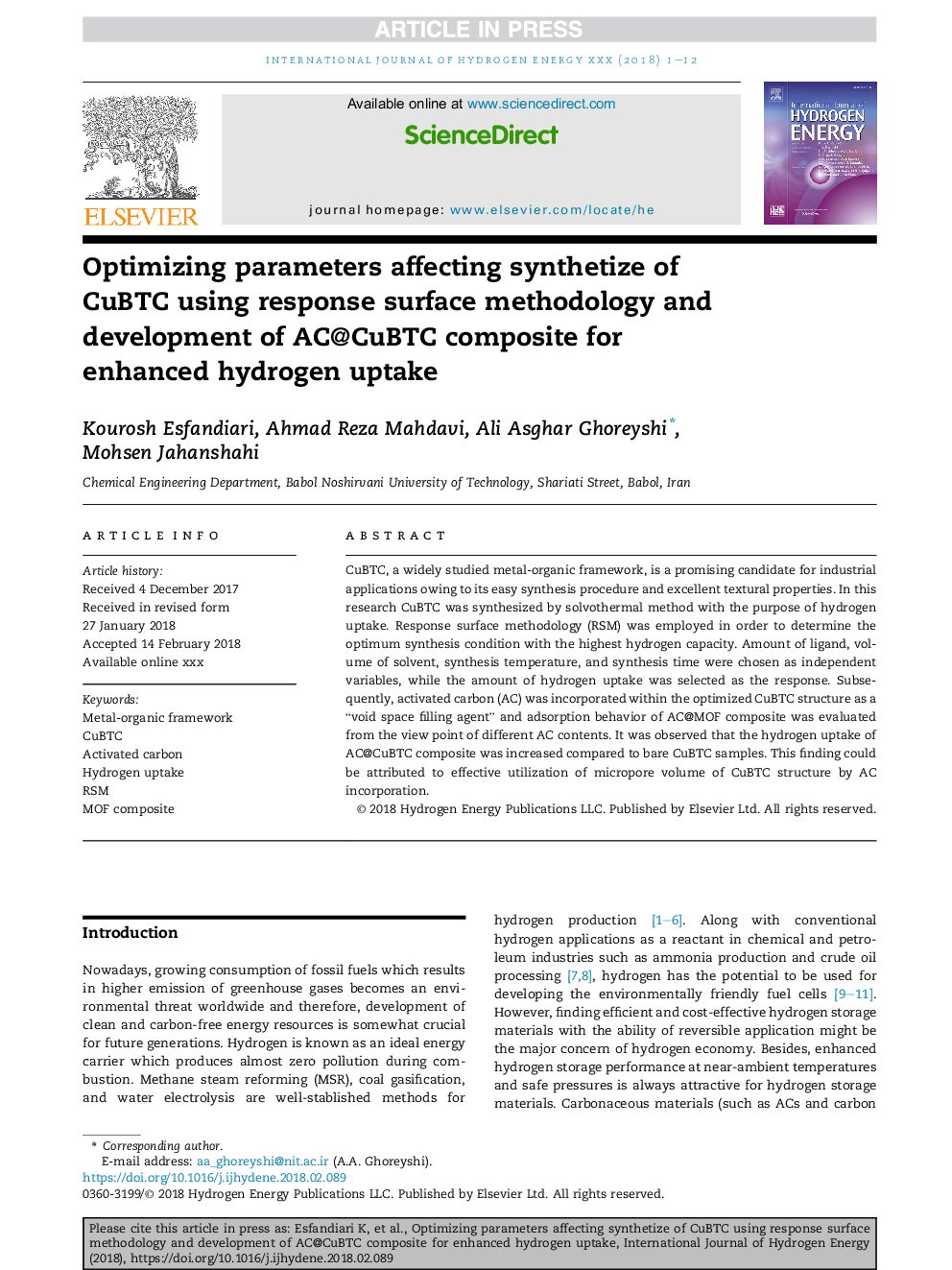| Article ID | Journal | Published Year | Pages | File Type |
|---|---|---|---|---|
| 7706911 | International Journal of Hydrogen Energy | 2018 | 12 Pages |
Abstract
CuBTC, a widely studied metal-organic framework, is a promising candidate for industrial applications owing to its easy synthesis procedure and excellent textural properties. In this research CuBTC was synthesized by solvothermal method with the purpose of hydrogen uptake. Response surface methodology (RSM) was employed in order to determine the optimum synthesis condition with the highest hydrogen capacity. Amount of ligand, volume of solvent, synthesis temperature, and synthesis time were chosen as independent variables, while the amount of hydrogen uptake was selected as the response. Subsequently, activated carbon (AC) was incorporated within the optimized CuBTC structure as a “void space filling agent” and adsorption behavior of AC@MOF composite was evaluated from the view point of different AC contents. It was observed that the hydrogen uptake of AC@CuBTC composite was increased compared to bare CuBTC samples. This finding could be attributed to effective utilization of micropore volume of CuBTC structure by AC incorporation.
Related Topics
Physical Sciences and Engineering
Chemistry
Electrochemistry
Authors
Kourosh Esfandiari, Ahmad Reza Mahdavi, Ali Asghar Ghoreyshi, Mohsen Jahanshahi,
